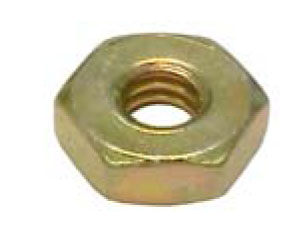
Nuts are commonly used with bolts. After inserting a bolt through an object, you can secure it with a nut. Twisting a nut onto the end of the bolt will prevent the bolt from coming out.
While some nuts are hexagonal, though, others are square. The shape of a nut may seem insignificant, but it can affect the nut’s utility.
What Are Hex Nuts?
Hex nuts are fasteners with interior threading that are characterized by a hexagonal shape. They have a hollow, ring-shaped center. But hex nuts have a hexagonal exterior that features six sides.
Most nuts are, in fact, hex nuts. You can distinguish them from other types of nuts by counting the number of sides. Hex nuts always have six sides. They are available in different sizes, materials and other specifications, but hex nuts always have six sides.
What Are Square Nuts?
Square nuts are similar types of threaded fasteners but with a square shape. They have a hollow, ring-shaped center, and like hex nuts, the center features interior threading. Square nuts simply feature a square-shaped exterior.
Square nuts, of course, have four sides. You can find them in different sizes. Bigger square nuts can accommodate bigger bolts. Regardless of size, all square nuts have four sides.
Differences Between Hex Nuts and Square Nuts
Hex nuts and square nuts are available in the same types of interior threading. They differ, however, in several ways. Square nuts aren’t as common as hex nuts. Hexagonal has become the universal shape in which most nuts are made.
Hex nuts are easier to install and tighten than square nuts. They have six sides, whereas square nuts only have four sides. Because they have more sides, hex nuts offer more torque, which makes them easier to install and tighten.
You can install hex nuts in smaller spaces. Each side of a hex nut is the equivalent of 60 degrees. Therefore, as long as you can move your wrench in a 60-degree range, you can install — as well as remove — a hex nut. Square nuts require more space. With only four sides, you’ll need to move our wrench in a 90-degree range.
Square nuts, on the other hand, are better protected against unintentional loosening than hex nuts. They typically cover a greater surface area of the object with which they are used. Square nuts will press against a larger portion of the object, thus preventing them from loosening.



